Cyclingnews Verdict
Good enough to do most things well without breaking the bank. Bright enough for the commute, and for some proper night road riding too. The mounting hardware is excellent, but the warning light for low battery gives little warning at all.
Pros
- +
Brilliant mounting bracket
- +
Easy double-tap for high beam
- +
Covers most bases well for a relatively low price
Cons
- -
Low battery light doesn't give much warning
- -
Can't mount under the bars the right way up
You can trust Cyclingnews
Price: £65 / $69.95
Max Lumens: 900
Weight: 138.9g
Battery Life: 2-35hrs
Cateye has been a mainstay in the cycling accessory market for a long time, and I remember having Cateye branded lights that took AAA batteries and used bulbs with an actual filament in them. Compared to even moderately decent modern lights - let alone any from my guide to the best bike lights - those old ones were basically useless, but Cateye has come a very long way since them.
The AMPP series is the latest in the brand’s line of general purpose front bike lights, taking over from the old Volt range. They all feature the same basic form - A roughly cuboid shaped body atop the brand’s excellent FlexTight bracket - and range in power from the diminutive AMPP100 to the extremely bright AMPP2200.
Having used the old Volt 800 for over eight years (it’s still going, I should add), and the AMPP900 for a load of riding in and out of the city limits I think it represents the sweet spot for a good ‘proper’ bike light, straddling the gap between more premium options and the best budget bike lights. It’s not too expensive, not least because it is regularly discounted, it’s bright enough around town for commuting on lower power, and outside the city limits it is capable enough to push the comfort zone from twilight into proper night time excursions. It isn’t going to allow you to ride through the night, but for a light you can pick up for just over £50 or just under $60 that is a big ask.
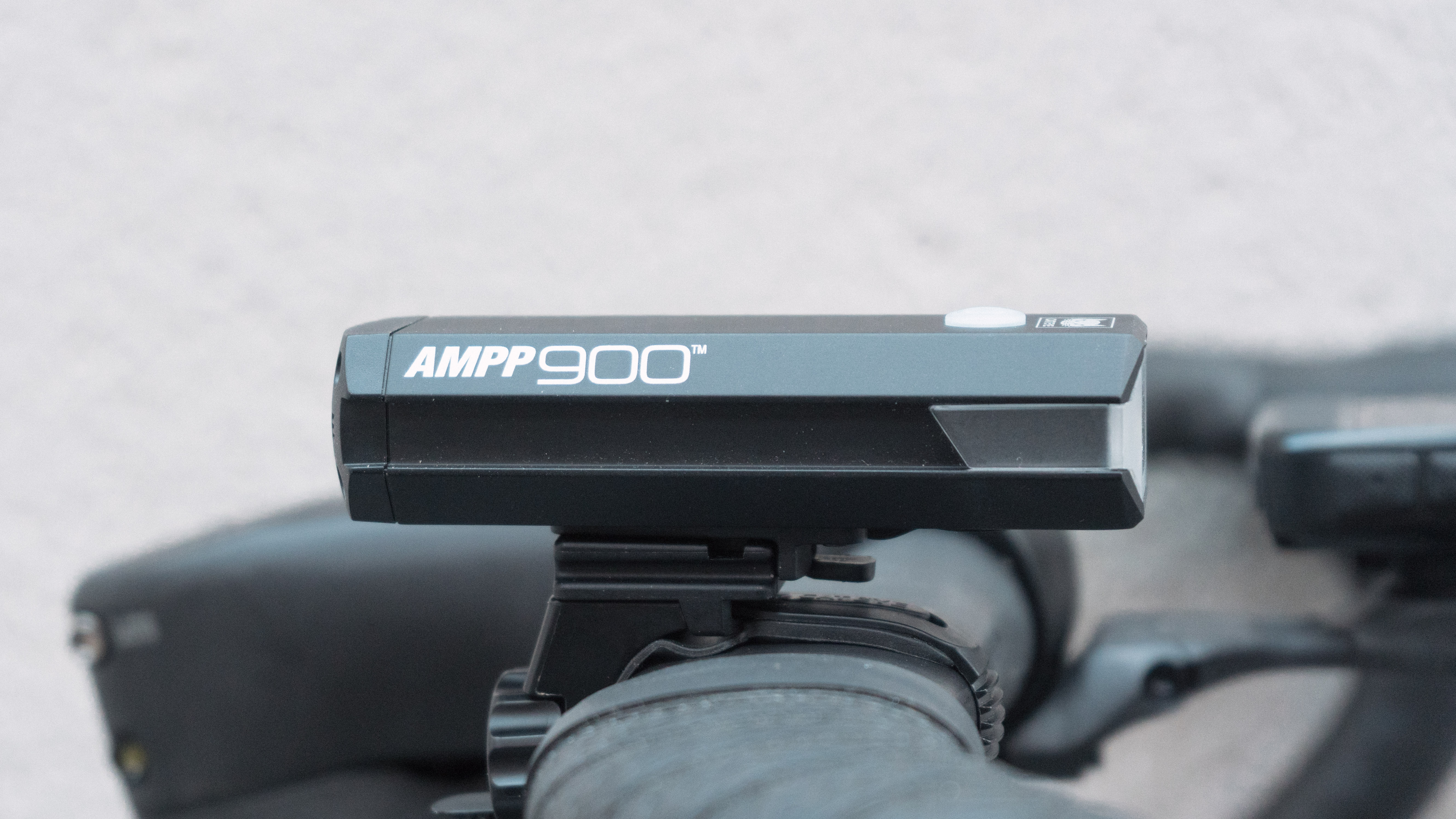
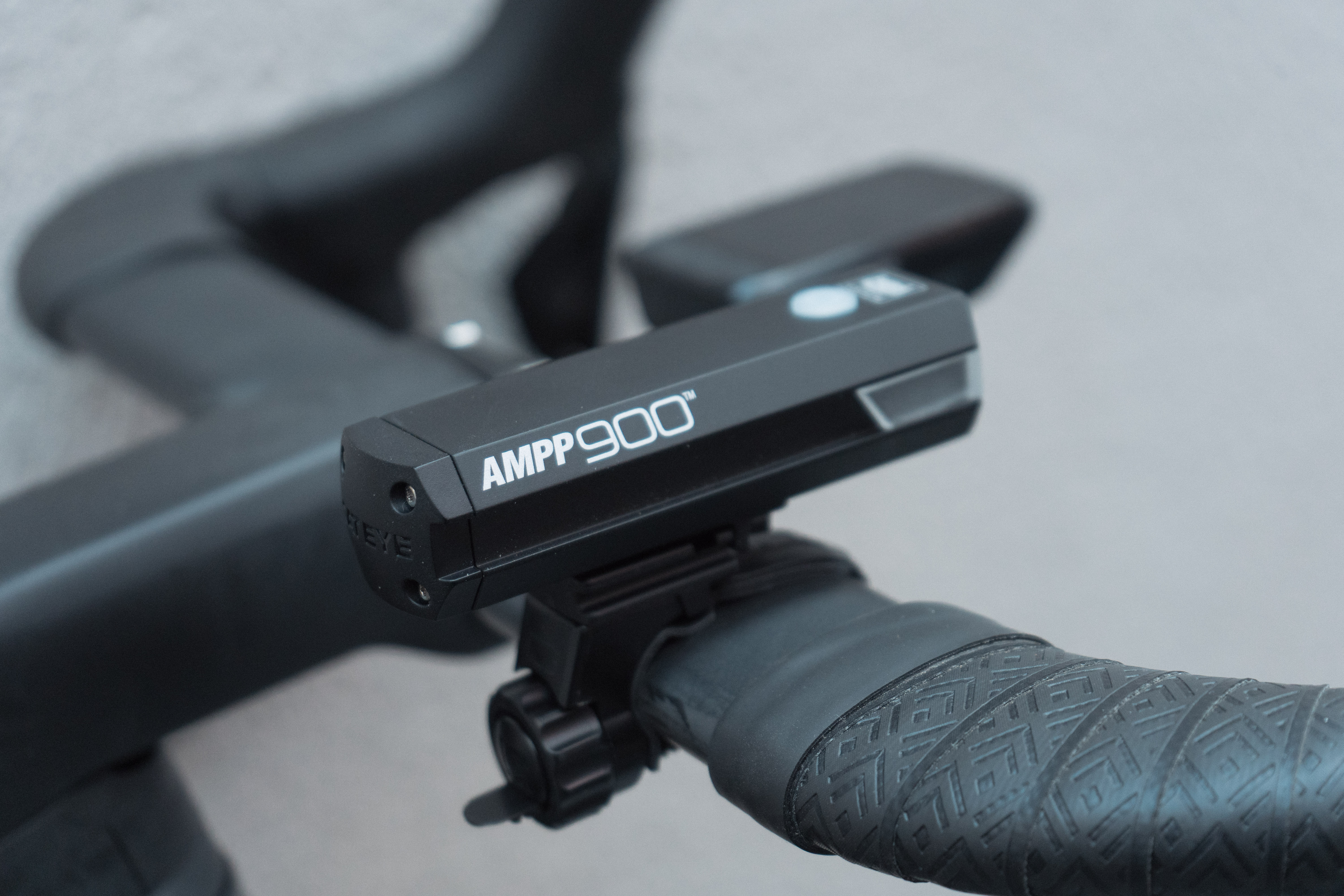
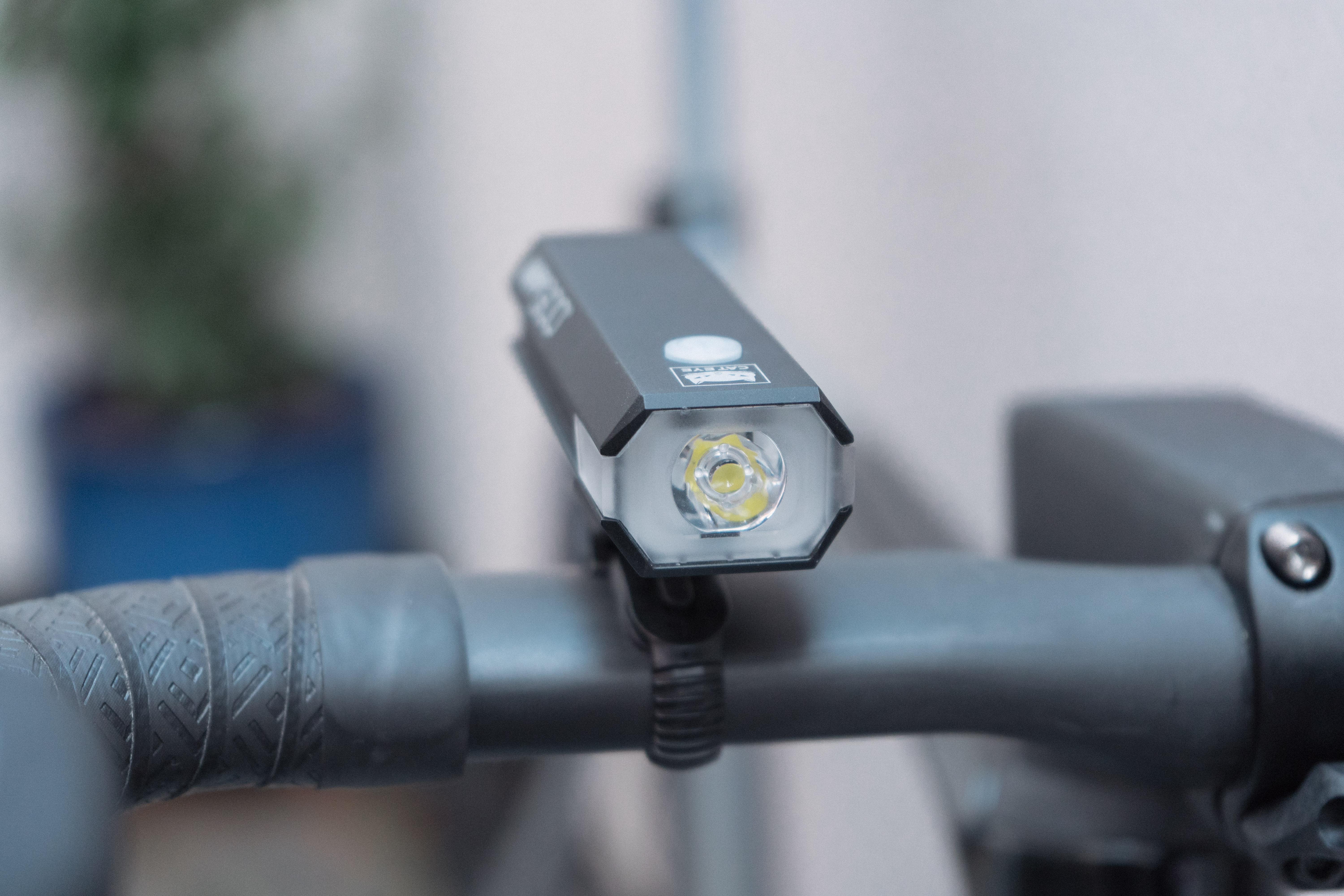
Design and aesthetics
Let’s not beat around the bush here - most front lights take the same basic form. You get a long tube-shaped lamp that houses the battery and the bulb, and you get a mounting bracket. There aren’t many ways you can stray from this setup without making something very unusual, though something like the Outbound Lighting Detour does this well.
The Cateye AMPP900 does not break any moulds, but the form is well executed. The lamp itself is an elongated octagon in cross section (or a rectangle with chamfered edges, take your pick), with a sturdy aluminium housing and two grooves running down either side. Unlike the old Volt series lamps the battery isn’t removable, mostly because removing the battery really served no purpose as it was charged via a micro-USB port in the lamp body. The battery itself in this case is a 3,000mAh unit which is about on-the-money for a light of this size.
Up front you have one large, single LED bulb. The front perspex cover is clear in a central oval, and frosted around the edges. This frosted plastic extends around the sides into two strips, bouncing some of the lights around the sides for added visibility.
The bracket I am a huge fan of, but I’ll discuss that more later. It’s unusual in that it uses an infinitely adjustable, flexible bracket, but the short version is that it means it can fit basically any set of bars you can think of.
Cateye has swapped over to USB-C, and doesn’t include a cable in the box, but realistically you’ll already have one. One gripe I had with the old Volt lights is that the recess around the charging port was very small, meaning only certain cables could squeeze in, but here there is plenty of room for whatever cable you happen to have lying around.
Finally, up top you get a single control button, which also acts as a battery indicator. With it you can cycle through the five modes - three solid and two flashing - and with a double press at any time (whether the light is off or on) you can immediately call upon the brightest setting.
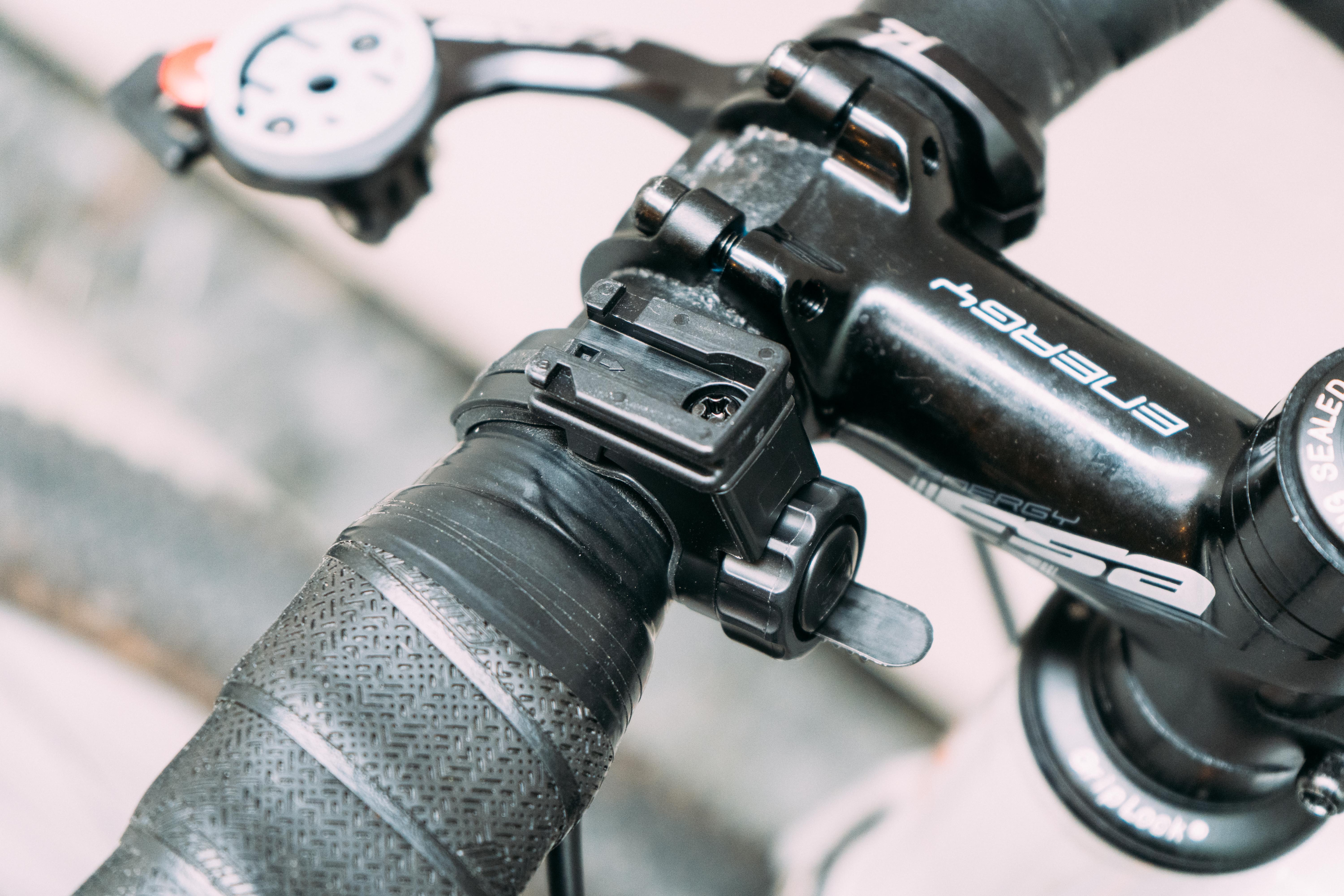
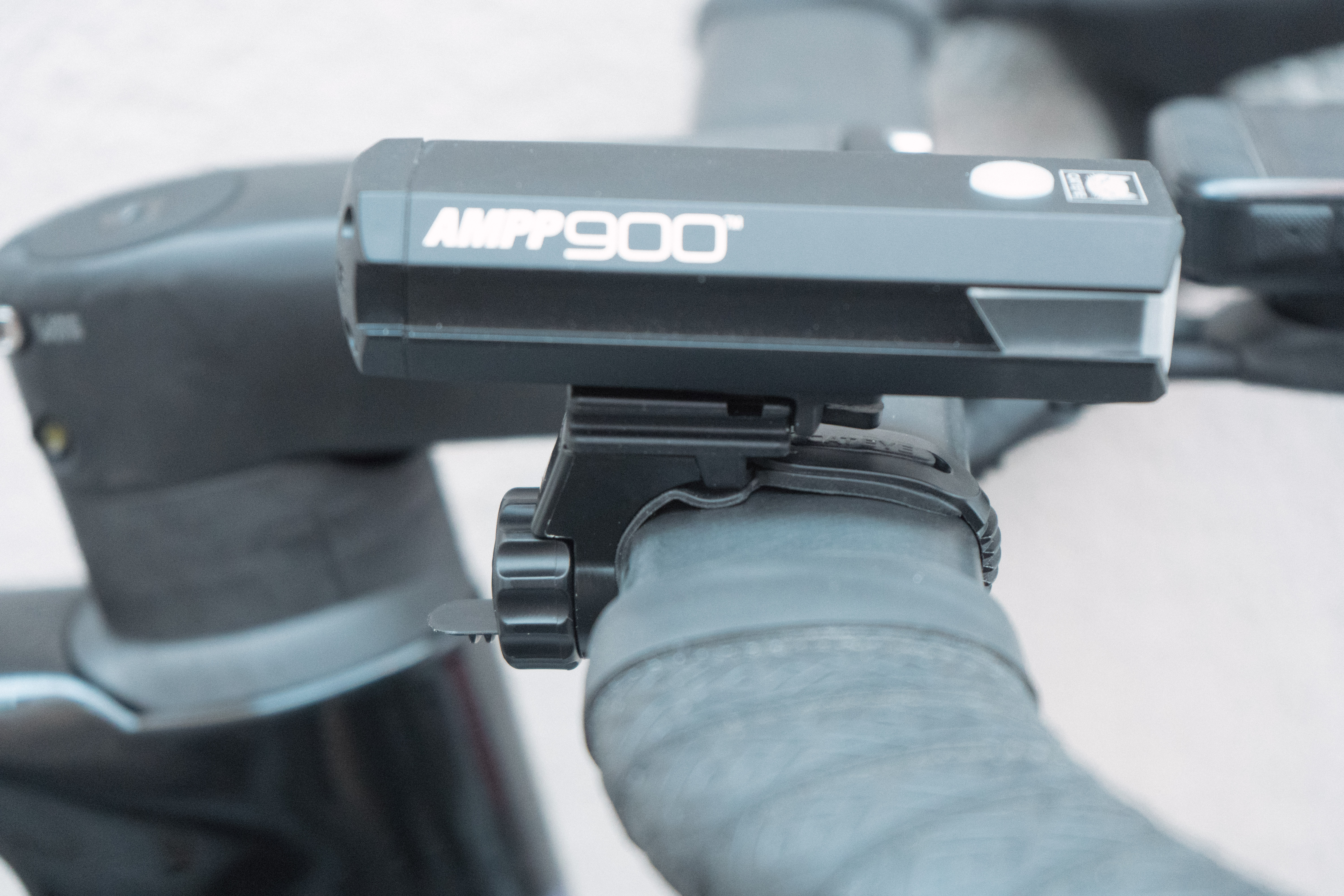
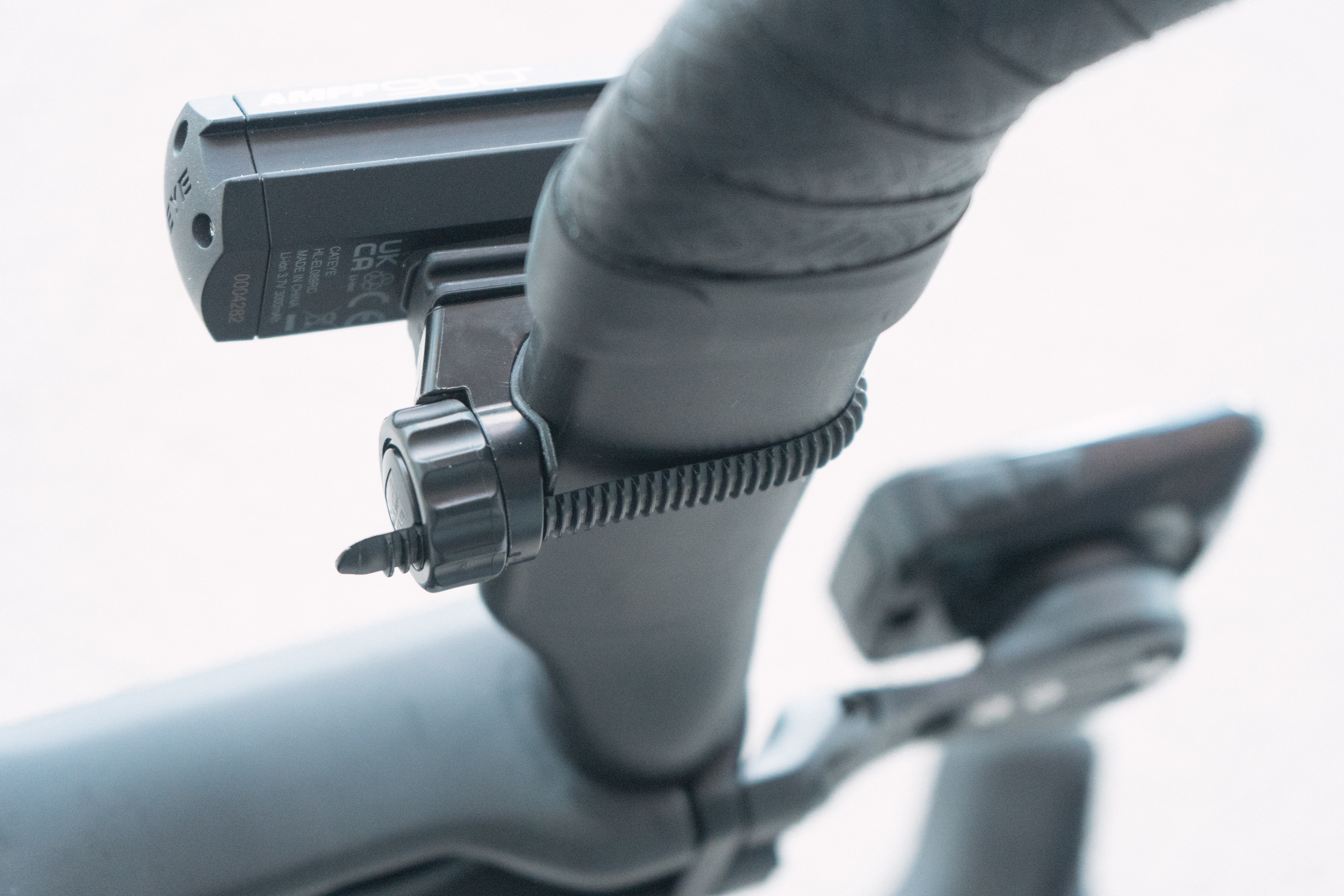
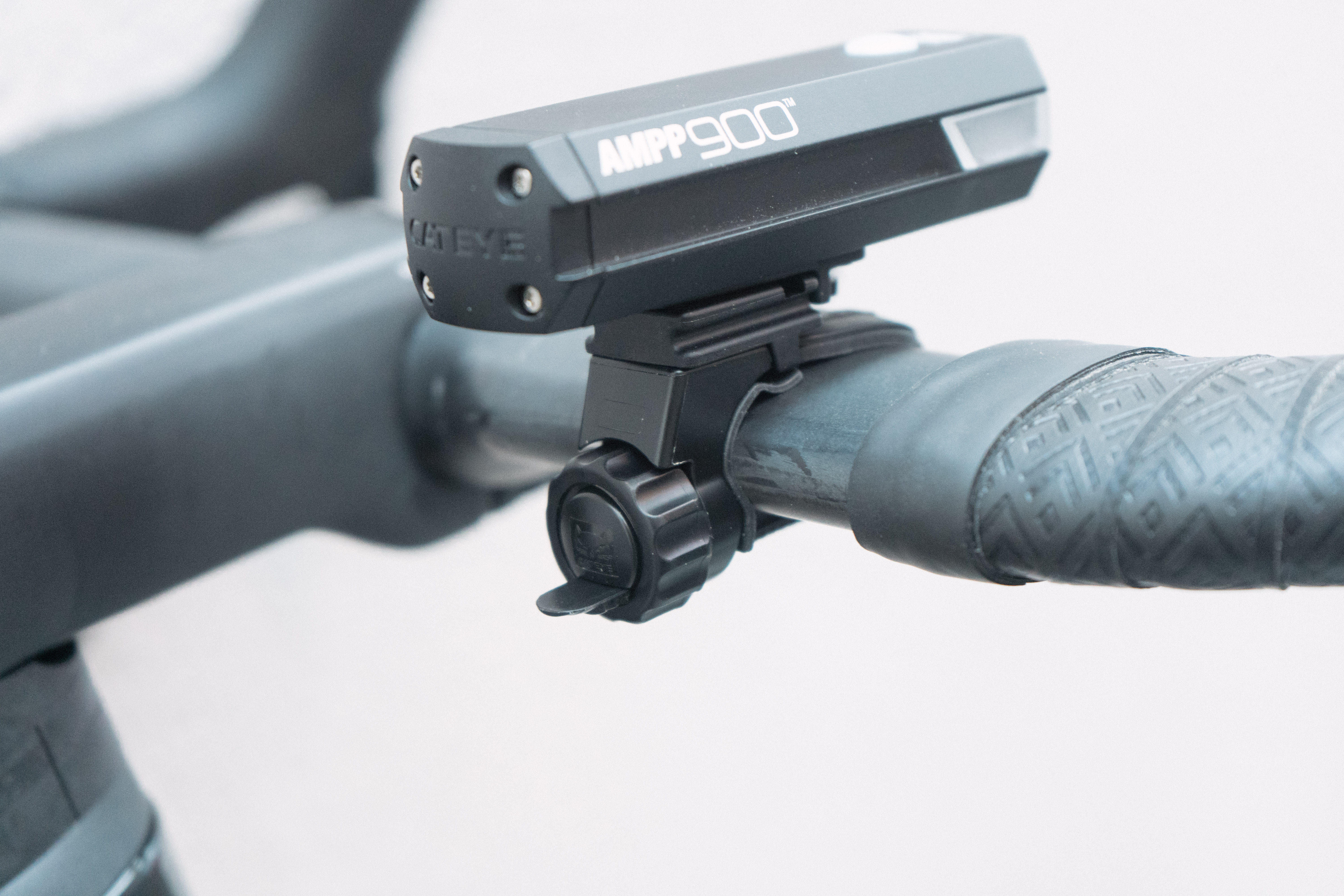
Performance
Unusually for a light I’m going to start with the mounting hardware. I am in a pretty enviable position in that I have a lot of bikes to play with on a constant rotation, and all of them have different bars. The Cateye FlexTight bracket fits them all, and this goes for any of the lights that use it. Instead of a stretchy rubber strap that gives a wobbly connection as you get on cheaper lights, or a solid bracket of a set diameter that you often get on more expensive lights that can’t enclose flat, aero cross section bars, you get a long, stiff-but-flexible ribbed strap. This strap threads into the rear of the mount, and is tightened by a free-floating dial.
It is more fiddly than a simple elastic, but it’s far more secure. You get about 45mm of depth to play with, so even the deepest aero bars should be well catered for, though it does depend on the circumference. It also means that, in a pinch, you can mount it to other unusual places like a fork leg. The light can swivel in the bracket by about 10 degrees each side, so you can account for backswept bars, or any angles less than vertical if you are running the light on its side.
For neatness I often used a Cateye to GoPro mount adapter so I could sling it under my computer, and in this orientation it works well and the mount is secure enough to be trusted, more so than the equivalent I tested from Knog with the Blinder 900, but it does leave the light upside down.
This doesn't matter a great deal as the light isn’t a cutoff beam like it is with something like the Trek Commuter Pro RT, so you can mount it whichever way up you choose. The beam has a decent throw, but there is certainly a brighter central patch with a step down to the edges thanks to that exterior halo of frosting on the front element. Comparing it to something far more expensive like the Exposure Race, where the beam gradually fades out to the edges it is certainly less well executed, but when riding the beam itself never really caused me any consternation. Cutoff beams are a better choice if you’re solely using it for commuting, as it is less likely to dazzle other road users, but for general use I prefer an old fashioned spread beam.
The top button is relatively small, but even in thick neoprene gloves I managed to happily cycle between the five modes even when it was slung under my bars; the button sits proud so you only have to be in the general area and you’ll find it just fine. The indicator bulb switches from blue to red when you are at low power, but this only really kicks in at the very lowest battery level. If you are already on low power and can’t step down you are soon to find yourself in total darkness, and it won’t auto-dim as some lights will on low power. Naturally, if you’re hanging it upside down you won’t see the warning anyway, but given it’s not actually much use I’d say you aren’t actually missing out much - just charge it after every ride and you’ll be golden.
There is a claimed two hours battery life at full power, and this is about in line with what I found out on the road. In freezing conditions I found it drained a little faster, but I don’t think these claims are in any way bogus. Around the city I found the middle, or even the lowest brightness was sufficient, and would generally use the flashing modes for commuting which use less power anyway, and out of the glow of the inner city the maximum brightness was only ever utilised when descending. A quick double-tap to switch it on, lock into the drops, and a single press at the end to revert back to whichever mode you were using previously.
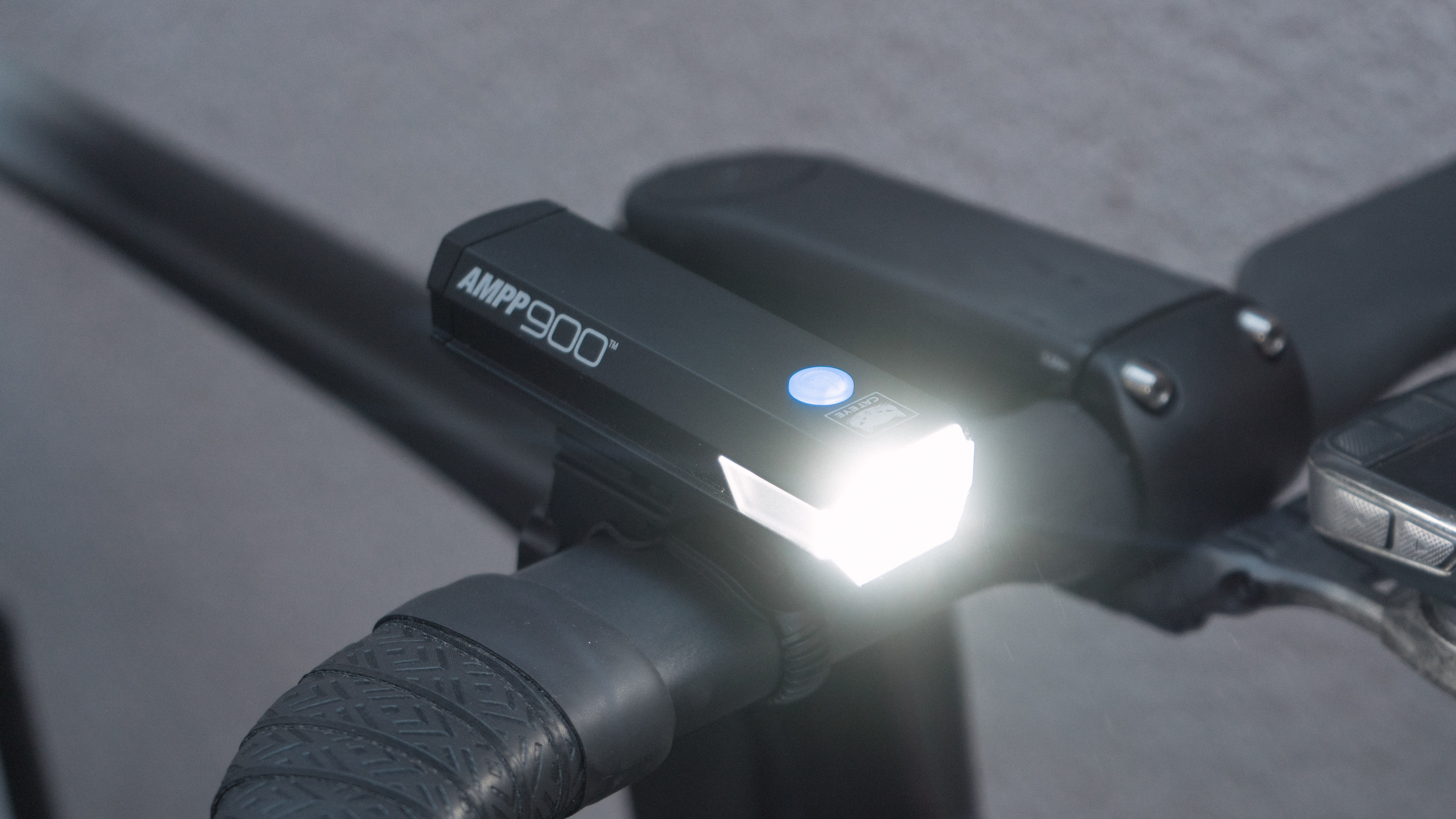
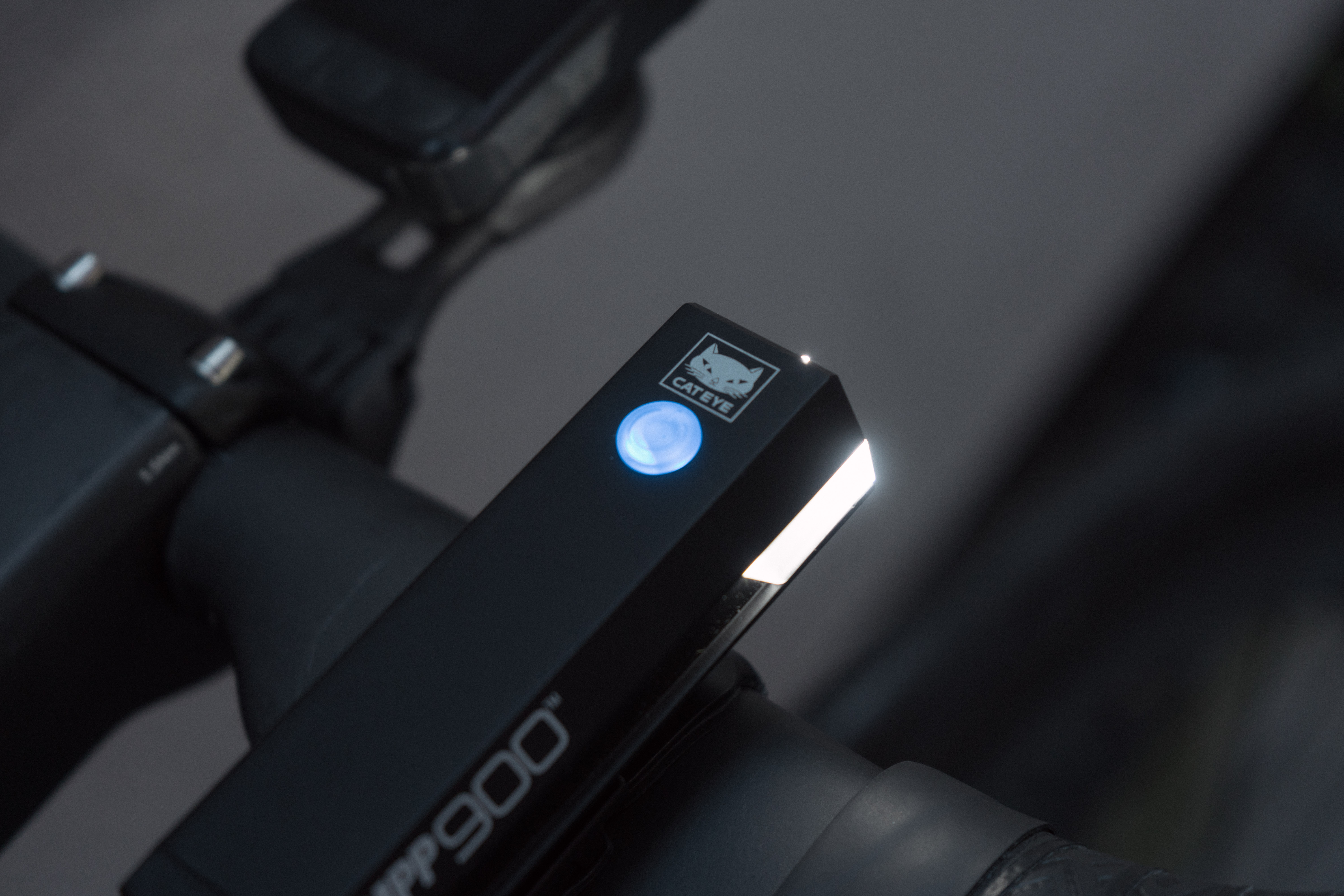
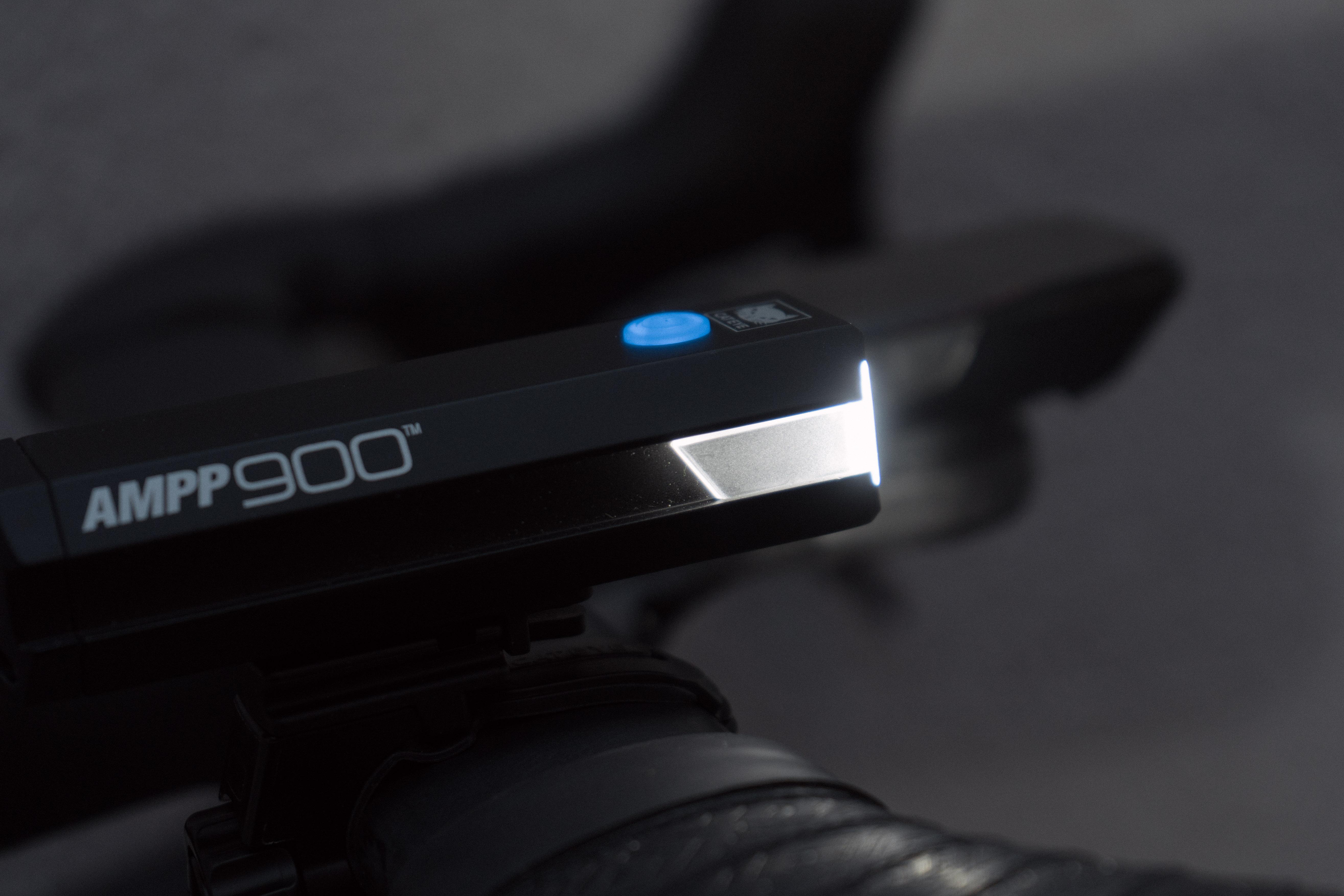
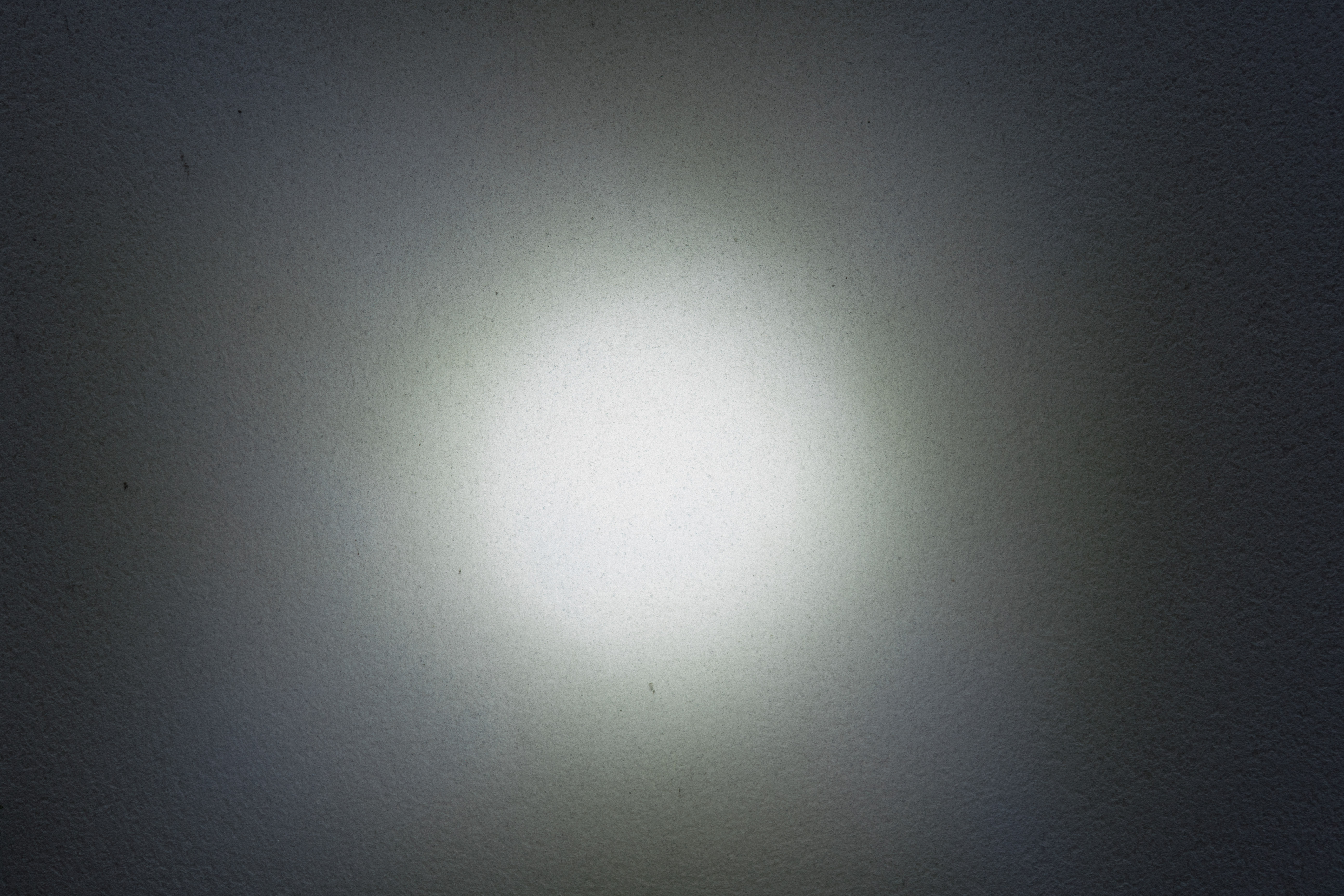
Value
You don’t get a load of fancy ‘smart’ features, but especially at a discounted price I think the Cateye AMPP900 represents brilliant value. It’s bright enough for do-it-all use, as long as you aren’t riding for hours on end at night, and is more than ample for commuting. The mounting hardware is market-leading in terms of its versatility, and while I have only a month or so of use with it, if it lasts as long as its predecessor then you’ll have a working light for eight years plus.
Verdict
I think the Cateye AMPP900 has to be one of the best, if not the best budget bike light on the market right now. It’s well made, durable, bright enough to easily cover commuting duties and winter club riding too. The battery life on high power isn’t spectacular, but it’s in keeping with a light of this size, and if deployed strategically the battery will last long enough for most winter rides where you’re only starting or finishing in darkness.
It’s a little cheaper than the Knog Blinder 900, and while you can mount the Knog the right way up under a computer I prefer the mounting hardware that comes with the Cateye, though you will need to buy a separate adapter to sling it beneath.
| Design and aesthetics | A brilliant mount is the headliner, but you also get added side visibility, and a really durable construction too. | 9/10 |
| Light quality | The step down from the central beam to the peripheries is a little harsher than I'd perhaps like, but for a light of this price the lighting is excellent | 8/10 |
| Control Scheme | Only having five modes and no smart functions makes this really user friendly, even more so with the double-tap for high beam function. | 8/10 |
| Battery life and charging | For the intended use I have no qualms about the battery life. Don't expect to ride through the night with it. The low battery indicator should come on sooner too. | 7/10 |
| Value | For what you pay you get a lot of light that should, if previous models are anything to go by, last for years and years. | 9/10 |
| Overall | Row 5 - Cell 1 | 82% |

Will joined the Cyclingnews team as a reviews writer in 2022, having previously written for Cyclist, BikeRadar and Advntr. He’s tried his hand at most cycling disciplines, from the standard mix of road, gravel, and mountain bike, to the more unusual like bike polo and tracklocross. He’s made his own bike frames, covered tech news from the biggest races on the planet, and published countless premium galleries thanks to his excellent photographic eye. Also, given he doesn’t ever ride indoors he’s become a real expert on foul-weather riding gear. His collection of bikes is a real smorgasbord, with everything from vintage-style steel tourers through to superlight flat bar hill climb machines.